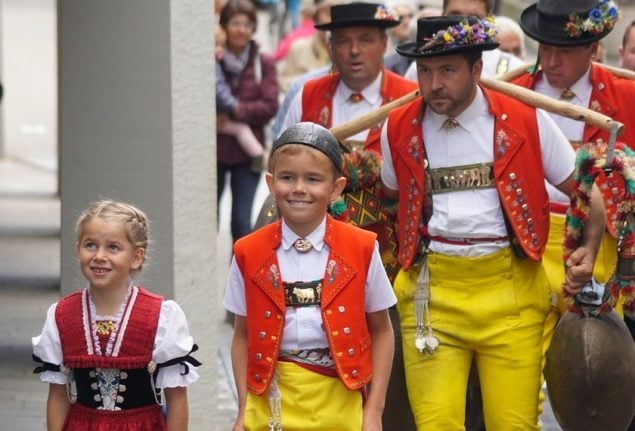Switzerland is considered the centre of the global wristwatch trade, with several of the world’s largest and most exclusive manufacturers based there.
However, this was not where the watch trade was born.
In the 16th century, portable, wearable clocks, usually worn on a chain around the neck, first appeared in the German cities of Nuremberg and Augsburg.
Both cities were known for precision instruments related to the weapons and surveying trades.
Several advances in metallurgy in these two cities enabled the creation of working, albeit somewhat unreliable, clock movements that could be carried around.
READ MORE: Cuckoo clocks and Toblerone: The ‘Swiss’ products that are not actually Swiss
Soon, these were luxury items – and in fierce demand across Europe.
Shortly afterwards, another momentous historical event occurred that would enable Switzerland’s dominance of the watch trade.
An industry is born
As the Protestant Reformation exploded across Europe, French Protestants – known as Huguenots – were driven from France by the Catholic monarchy.
Many of these Huguenots crossed to Switzerland and settled in Geneva, bringing their skills as metalworkers and jewellers.
At this time, the city of Geneva was under the control of the reformer John Calvin and his supporters.
Calvin was a strict and austere man who had forbidden displays of flashy jewellery in the city. Thus, many Huguenots retrained as watchmakers to circumvent the religious laws that were rigorously enforced.
Necessity breeds innovation, and within decades, the first clunky, inaccurate wearable clocks were replaced by far more advanced, smaller timepieces.
READ MORE: Geneva watch fetches $21 million at auction
Throughout the 17th century, the pocket watch became incredibly popular, owned in large numbers by the nobility.
Several large mercantile companies appeared in the 18th century, and the merchant class also began carrying them.
To meet this surge in demand, timepiece manufacturing spread beyond Geneva to several nearby cantons, such as Neuchâtel and Jura.
At this time, the country’s oldest still-existing watch manufacturer, Blancpain, was founded in 1735. Breguet, another titan of the watchmaking industry, was founded in 1775.
The first wristwatch
By the 19th century, the Swiss clock and timepiece industry had achieved almost total dominance, only rivalled by England and parts of Germany.
This is due to the development of the etablissage system. Family firms in various villages and towns would be responsible for creating standardised watch parts, which would then be assembled by watch firms in the larger cities.
Inventing the self-winding mechanism also played a huge role in furthering the influence of Swiss watchmaking.
Such a system streamlined the production process and meant that watches could consistently be produced without waiting for specific parts to be available.
Many believe that Abraham-Louis Breguet created the first wristwatch in 1810 for Caroline Bonaparte, Queen of Naples and sister of Napoleon.
READ MORE: Napoleon’s locks to be put in Geneva watches
This led to a fashion trend, and by the mid-19th century, women would wear bracelets that included a timepiece.
Many new luxury brands, such as Patek Philippe in 1839, emerged to cater to this market.
Men’s wristwatches would follow later – prompted by military men requiring something to use to time manoeuvres in the field.
The Swiss watch industry continued to expand throughout the 20th century, weathering the development of quartz movements in Japan and several other threats to its dominance.
Today’s Swiss watch industry
In 2024, the Swiss watch industry will contribute around 26.5 billion francs to the country’s economy, with just four companies—Rolex, Patek Philippe, Audemars Piguet, and Richard Mille—comprising almost half the market share.
Around 700 wristwatch makers operate across Switzerland today, catering to luxury and specialist markets.
Despite competition from other countries, such as Japan and the United States, the country is still viewed as a centre of innovation and excellence.
READ MORE: Swiss watches rebound to beat the pandemic blues
Many firms emphasise bespoke, hand manufacturing as their strength in creating excellent timepieces.
This perhaps explains the prices that some Swiss watches can command —some Patek Phillipe models, for example, have sold for more than 20 million euros!



 Please whitelist us to continue reading.
Please whitelist us to continue reading.
Member comments